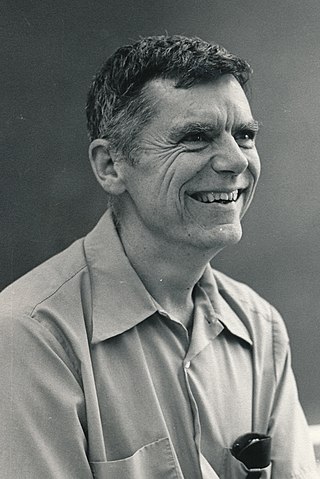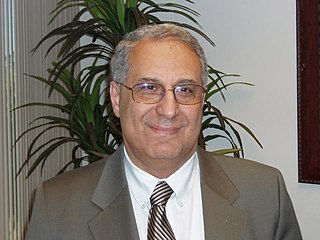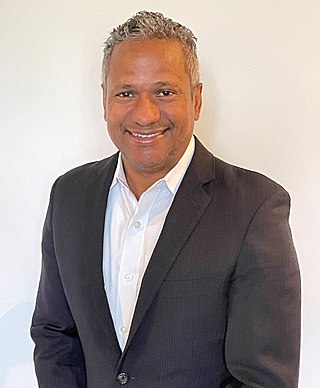Related Research Articles

Grigory Isaakovich Barenblatt was a Russian mathematician.

The American Society of Mechanical Engineers (ASME) is an American professional association that, in its own words, "promotes the art, science, and practice of multidisciplinary engineering and allied sciences around the globe" via "continuing education, training and professional development, codes and standards, research, conferences and publications, government relations, and other forms of outreach." ASME is thus an engineering society, a standards organization, a research and development organization, an advocacy organization, a provider of training and education, and a nonprofit organization. Founded as an engineering society focused on mechanical engineering in North America, ASME is today multidisciplinary and global.

Leon Pratt Alford was an American mechanical engineer, organizational theorist, and administrator for the American Society of Mechanical Engineers. known for his seminal work in the field of industrial management.
Raymond David Mindlin was an American mechanical engineer, Professor of Applied Science at Columbia University, and recipient of the 1946 Presidential Medal for Merit and many other awards and honours. He is known as mechanician, who made seminal contributions to many branches of applied mechanics, applied physics, and engineering sciences.

Mohamed Gad-el-Hak is an engineering scientist. He is currently the Inez Caudill Eminent Professor of biomedical engineering and professor of mechanical and nuclear engineering at Virginia Commonwealth University.

Masayoshi Tomizuka is a professor in Control Theory in Department of Mechanical Engineering, University of California, Berkeley. He holds the Cheryl and John Neerhout, Jr., Distinguished Professorship Chair. Tomizuka received his B.S. and M.S. degrees in mechanical engineering from Keio University, Tokyo, Japan in 1968 and 1970, and his Ph.D. in mechanical engineering from the Massachusetts Institute of Technology in February 1974. He was elected to the National Academy of Engineering in 2022.

Jan Drewes Achenbach was a professor emeritus at Northwestern University. Achenbach was born in the northern region of the Netherlands, in Leeuwarden. He studied aeronautics at Delft University of Technology, which he finished with a M.Sc. degree in 1959. Thereafter, he went to the United States, Stanford University, where he received his Ph.D. degree in 1962. After working for a year as a preceptor at Columbia University, he was then appointed as assistant professor at Northwestern University.

Cristina H. Amon is a mechanical engineer, academic administrator and was the 13th dean of the University of Toronto Faculty of Applied Science and Engineering. She was the Faculty's first female dean. Prior to her appointment at the University of Toronto in 2006, she was the Raymond J. Lane Distinguished Professor and director of the Institute for Complex Engineered Systems at Carnegie Mellon University.
Nancy Burr Deloye Fitzroy was an American engineer specializing in heat transfer and fluid dynamics. She was one of the first female helicopter pilots.

Philip Gibson Hodge Jr. was an American engineer who specialized in mechanics of elastic and plastic behavior of materials. His work resulted in significant advancements in plasticity theory including developments in the method of characteristics, limit-analysis, piecewise linear isotropic plasticity, and nonlinear programming applications. Hodge was the technical editor of American Society of Mechanical Engineers Journal of Applied Mechanics from 1971-1976. From 1984 to 2000 he was the secretary of the U. S. National Committee on Theoretical and Applied Mechanics, its longest serving Secretary. In 1949 he became assistant professor of Mathematics at UCLA, then moved on to become associate professor of applied mechanics at Polytechnic Institute of Brooklyn in 1953, Professor of Mechanics at Illinois Institute of Technology in 1957, and professor of mechanics at the University of Minnesota in 1971, where he remained until he retired in 1991. After retirement he was professor emeritus at the University of Minnesota and visiting professor emeritus at Stanford University.

George Em Karniadakis is a professor of applied mathematics at Brown University. He is a Greek-American researcher who is known for his wide-spectrum work on high-dimensional stochastic modeling and multiscale simulations of physical and biological systems, and is a pioneer of spectral/hp-element methods for fluids in complex geometries, general polynomial chaos for uncertainty quantification, and the Sturm-Liouville theory for partial differential equations and fractional calculus.
Professor Yogesh Jaluria is Board of Governors Professor and Distinguished Professor at Rutgers, the State University of New Jersey, in the Department of Mechanical and Aerospace Engineering. He is a specialist in thermal sciences and engineering.

Fred J. Miller was an American mechanical and industrial engineer, known for his seminal work in designing high-precision scientific instruments, and as president of the American Society of Mechanical Engineers in 1920–21.
Edwin Burnley Powell was an American mechanical and consulting engineer. He was awarded the 1954 ASME Medal for many years of consulting engineer. The ASME had argued, that in these days he was "probably the most widely consulted engineer in the public-utility field."
J. Robert Sims is an American chemical and mechanical engineer, former research engineer at ExxonMobil, and inventor, who served as president of the American Society of Mechanical Engineers for the year 2014–15.
Frank Kreith was an American mechanical engineer.

Eckart Heinz Meiburg is a German-American professor of mechanical engineering at the University of California, Santa Barbara. His research focuses on using computational fluid dynamics to study phenomena including sediment transport in gravity and turbidity currents, double diffusive instabilities, and particle-laden flows.

Reda R. Mankbadi is the founding Dean of the Engineering College at Embry-Riddle Aeronautical University. He is a former NASA senior scientist at NASA's Glenn Research Center and a Fellow of the NASA Lewis Research Academy. Mankbadi has published over 150 scientific papers.

Luciano Castillo is an engineer known for his work in theoretical and experimental fluid dynamics, turbulence and wind energy and for applying scaling analysis and asymptotic methods. He is currently the Kenninger Chair Professor of Renewable Energy and Power Systems in the School of Mechanical Engineering at Purdue University, West Lafayette, Indiana, where he is also the Dean’s Faculty Fellow for Hispanic/Latino Engagement, Purdue University, (2019–present).
William J. Wepfer is an American mechanical engineer.
References
- ↑ "APS Fellows Archive". American Physical Society . Retrieved 2024-11-29.
- ↑ "List of all ASME Fellows" (PDF). American Society of Mechanical Engineers . September 2024. Retrieved 2024-11-29.